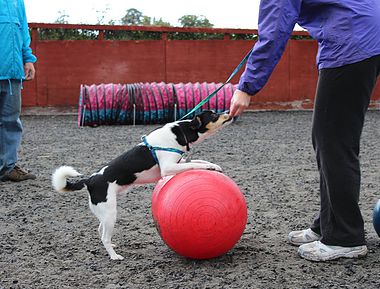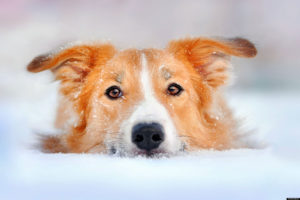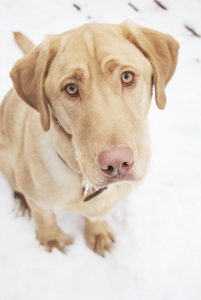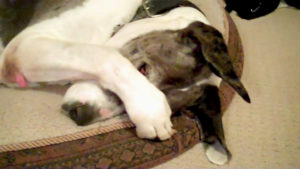
The Value of Rewarding Your Dog
Identifying and providing high-value rewards for good behavior is a crucial element to positive reinforcement. Often referred to as ‘reward-based’ training, the appropriate and timely delivery of a reward during training makes a dog more confident and able to manage successfully in a domestic environment. Importantly, this positive interaction between dog and owner also encourages a mutual understanding that increases the human/animal bond.
Food is the most commonly used reward for dogs that are food-motivated due to its unique ability to alter brain chemistry, but other rewards such as toys, praise and play can be just as powerful if a dog happens to be more interested in them.
The use of rewards in training is an often misunderstood concept. Instead of thinking of rewarding your dog as bribery, consider the reward a valuable salary being paid to your dog for a job well done. If your dog doesn’t respond, he doesn’t get paid. If he does, he gets his payment.
Dogs’ brains are wired very similarly to ours, so always consider your dog’s training experience from his perspective while maintaining a guiding hand. This will help your dog learn to make the right choices on his own more often and more quickly, while instilling gentle guidance and discipline that is constructive rather than destructive.
Intermittent Reinforcement
Any reward that is used to motivate your dog to learn has to be of high value until he is responding reliably. Once this has been achieved the high value reward (such as food) should be used intermittently. That means your dog does not get rewarded with the high value reward every time he responds to a cue, but there is a chance he might get it the next time. If the high value reward is not given then a lower value reward is given in its place. For a food motivated dog a low value reward might be praise, while for a toy motivated dog the low value reward might be food.
In fact, intermittent reinforcement like this actually makes a dog respond faster and more reliably because the theory is based on the same one that makes a slot machine in a casino so addictive. It would be wonderful if a slot machine gave out money every time you played it but unfortunately that never happens. The promise, however, that you could win the jackpot the next time you play makes you want to play even more until the slot machine pays out.
This is how a dog learns most effectively, so even if you do not give a high value reward every time, the potential of one in the future will make your dog work much harder.
Bottom Line
If your dog sees that there are pleasurable consequences for a behavior, he is more likely to repeat the behavior because doing so makes him feel good. When you are attached to that good feeling there is more likelihood of the dog listening and responding to whatever you ask of him. For many dogs the anticipation of the reward is sometimes just as good, if not better than the reward itself.
As you go through your normal day-to-day life with your dog, it is much easier to set them up to do what we want and reward them than to set them up to fail and to punish them. Here are some examples of what I mean:
-
- Instead of having your dog stare at you from a couple inches away when you’re eating, practice putting him in a down/stay either on the floor, or on a mat and rewarding him for staying there.
- Instead of waiting for your dog to pull on leash and trying to “correct” him, be proactive and ask him to look at you and walk near you while giving rewards.
- Instead of trying to “correct” your dog when it starts barking at people or other dogs on the walk, focus on teaching him to look at you and rewarding him for doing so.
These are just a couple of examples. You’ll notice though when doing this that your dog will respond faster and faster to what you’re asking.
To pay a dog, you just need to find a currency that your dog is willing to work for. Most of the time, food is the easiest form of currency. Other forms though are toys, praise, affection, play, access to things like people or trees, and also going outside. In order to make these forms of currency something that your dog will be willing to work for, you have to make sure that the thing you choose isn’t readily available. So if you choose food, I’d recommend not always having a full bowl of dog food lying around the house.
When you first get into paying your dog in certain situations, you’ll be giving high payouts. As they get better in those situations, the payouts will happen less frequently. For example, when you first start teaching your dog to walk with you instead of pulling, you may be rewarding every couple of steps. But when done correctly, you’ll be able to ask for more and more steps in between rewards.
I am a big fan of using my dog’s kibble for training. This may not be an option for your dog if you’re just starting out, but once you get into the swing of things, you’ll be able to use your dog’s normal meals as rewards for training. This is what I call a win-win.
There is nothing wrong with using treats to train your dog. If you’re thinking it’s all just bribery, remember who is holding the treats. As the human, we have the capability to control everything that our dogs enjoy in life. All we have to do is ask them to do something before giving them that thing and that equals paying the dog.
Overall, dogs are always looking to do something that brings them enjoyment. All we have to do is be proactive, set them up to do what we want, give them good stuff for doing it, and the human and dog are both happy. Isn’t that what it’s all about, anyway?





